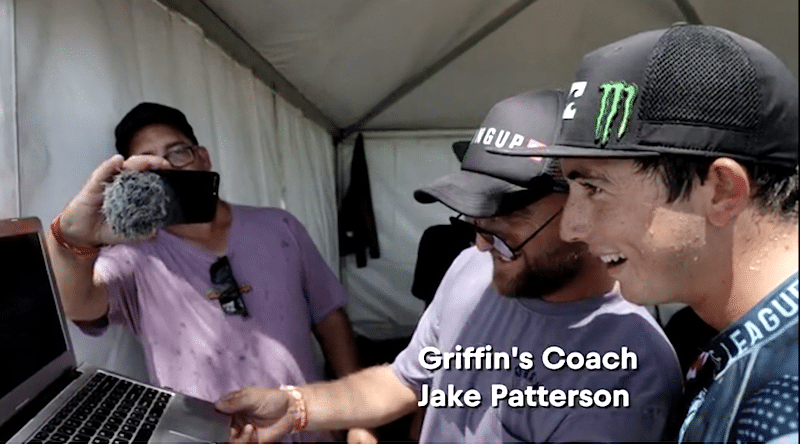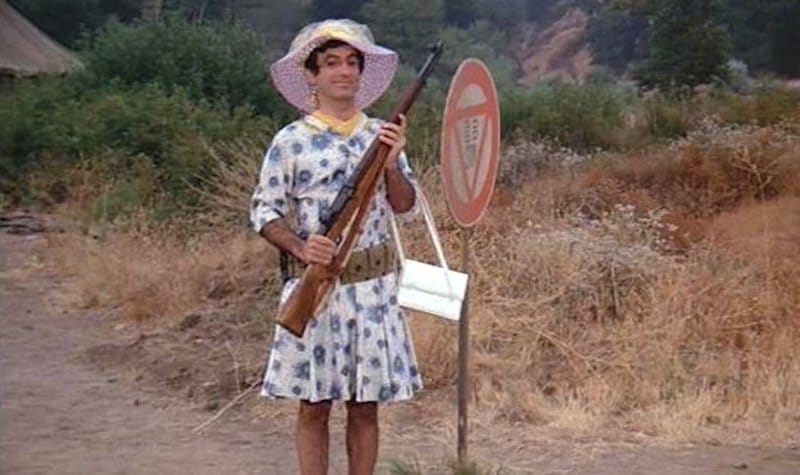The two-time world champ Tom Carroll makes his older bro a remarkable surfboard…
Jeez where do I start.
1978? Maybe not yet.
Three months ago my little brother called me and told me he wanted to make me a board.
“Developing something,” he said hopefully. “Just want to see what you think.”
Tom had made me a board once before — for my 35th birthday, about the same time as he made a crazy MP-style fang tail for Kelly. Mine was a 6’7” step-tail pintail, from an idea I once had about surfboards thanks to a board featured in our childhood surfing manual, Paul Hamlyn’s “A Pictorial History Of Surfing”.
The board was designed by Hawaii’s John Kelly and was called the Hydro-tail. It featured a drop-off tail edge, kinda like a Stinger but way back on the tail wing, behind the fin.
But I never made Tom a board in return. This is an uncomfortable thought for me, another comparison with my brother in which I come off second best: Tom is generous with me, yet I’m rarely generous in return.
I rode the step-tail a few times at Rocky Point in Hawaii, it was really good! Crude, but the curves were fine. It’s in the garage right now, resting. I don’t know what Kelly did with the fang.
But I never made Tom a board in return. This is an uncomfortable thought for me, another comparison with my brother in which I come off second best: Tom is generous with me, yet I’m rarely generous in return.
My theory regarding Tom’s boards was simple: they sucked. Tom was not a normal human. Therefore the surfboards he rode were not fit for normal human consumption.
Then again, I’d never gone around asking to ride his boards. My theory regarding Tom’s boards was simple: they sucked. Tom was not a normal human. Therefore the surfboards he rode were not fit for normal human consumption. They were too harsh, too narrow, almost cruelly clean in their perfectly composed lines. World champion surfers’ boards mostly fall into one of two categories: either they work for everybody, or they work for only one person ever. Tommy Curren’s and AI’s worked for everybody. Tom Carroll’s worked for one person, and it wasn’t me.
World champion surfers’ boards mostly fall into one of two categories: either they work for everybody, or they work for only one person ever. Tommy Curren’s and AI’s worked for everybody. Tom Carroll’s worked for one person, and it wasn’t me.
Instead I delighted in other things: rocker not outline, channels not vee, MC’s deep crazy concaves, small fins, lift and curve. Boards that perversely enough my little brother never seemed to like too much. In this way I constructed a place where my own surfing could safely exist, complete and separate from that of my unusual and profoundly gifted sibling. Virginia Woolf called it “a room of one’s own”, speaking of the place every writer needs in order to survive and grow, and I’ve always imagined the same to be true of surfing. This room you build and fill with all your shiny little scraps, images, memories, feelings, smells, glimpses of things, the humiliations and the sublimities, the worst and the best, every wave you’ve ridden and every surfboard you’re ever owned.
My room was only small by comparison with so many of the surfers I’ve known, awkward and cluttered and a bit grubby, not the great clean Valhallian space inhabited by Thomas, but it was mine.
However we are now adults, right? Who knew what was possible.
We met at Max Stewart’s factory in Brookvale. Max, of Eye Symmetry fame, was actually making this board, with little bro driving the CAD bus.
I had a picture of Max in my head based on his work and on Tom’s descriptions. Tom reckoned he was a bit Japanese. In fact Max is tall, pale, and quietly witty, with an aesthetic sense that seems to embrace even the smallest detail of the surfboard’s design and construction. I suspect he over-works.
We gathered in the bay around the pre-cut shape and Max got into it with the gauze while
Tom explained what he was after: a board drawn from a wide range of stuff he had in his head. First was a board he’d got from Col Smith back in ’78. Col was all-time, well he still is, but as a shaper 40 years ago he would get hold of one of those rough as guts blanks from Bennett or Surfblanks, and just get stuck into it, just a planer and a Surform, and make a board in 20 minutes. In 1978 he made Tom a clean little round pintail singly and it went insane.
Next was the Thing, the Pipeline, pulled back narrow tails, wide point forward. Rawson lines.
Third was John Florence and John Pyzel, the Ghost lines. John’s performance at Margies in 2017 had caused a rupture in the space-time continuum for many great surfers, but Tom and pintails at Margies go a long way back, and he felt a resonance — really going all the way back to ’78, when he won an Aussie junior title at Margaret River and South Point, riding that little singly Smithy had hacked out.
“There’s no mercy in this thing, is there,” I ventured. Boards look different in the shape than after glassing, but the bones of it were hard and harsh. Max cackled and Tom chortled. “I’ve named it,” he said. “It’s a Leaf. Like a gum leaf. You know.” He crimped his hand up to resemble the dried curve of such a leaf.
They both signed it, eventually. 6’1” x 187/8” x 25/16”. Also twenty seven point six liters, as I discovered later. I never know the litres!

They were determined to colour it. I suggested an orange above-rail outline spray, like I used to get on my boards around 1978. They didn’t do that. Instead they sent it to the legendary Martyn Worthington, the man responsible for all those incredible Hot Buttered psyche-art sprays of the 70s and 80s, and got Martyn to do a blue tail fade and an exact replica of the original TC sash spray, the one on that little Smithy.
It fucked with my head. I sat it on the arms of a couch in my office and looked at the fucken thing for a week.
A Tom Carroll 1978 sash.
It fucked with my head. I sat it on the arms of a couch in my office and looked at the fucken thing for a week.
From every angle it looked different. I looked down the center rocker line and thought, you’re kidding me. This was traditional Tom Carroll writ large, the kind of thing I’d avoided since he’d gone down the Pipeline road 30-something years before. Just too straight. Then I looked from another angle and saw a shitload of lovely curve, partly rocker, partly outline, pulling back toward that narrow tail.
The rail was hard as a rock to the tail, but halfway up it kinda dissolved into something softer and rounder. Indeed the more I looked at it, the more it seemed like two boards conjoined. The back half a sort of Rawson/Mike Baron blend, the front a strange morphing of the Smithy board from 1978, all bent nose rocker, softened entry, and tucked-under edge. Like a gum leaf, in fact.
As if to place a cherry on top of this melange, the fin cluster was set well up the board, with a back fin edge around six inches off the pod, like it was a 7’10” or some such. Behind the back fin was two inches of straight edge then an odd little flip off the tail, releasing what was left of the concave
I put fins in and took ‘em out and put others in. Left it alone, stared at it again. Turned it sideways on the couch so all I could see was the deck and the spray. Now it was all outline — wide point forward, single-fin style, pulled back narrow tail. Where would I even stand?
A swell came and I surfed three other boards in three days, avoiding the Leaf. Then driving home from a surf on day four, I stopped for a block of wax, had something to eat, screwed in a set of small handmade Phil Way fins, and trying not to think about the sash spray even though it was staring me in the god damn face, paddled out.
And yeah, it was simple. So, so simple. From the first wave.
Recently I read a piece by the late Midget Farrelly in a Tracks magazine from 1971, wherein Midget wrote about a tri-fin he’d been riding at the time. The photo showed something un-thrustery, more like a widowmaker with the rail fins set athwart the center fin, but Midget’s description sounded very much more in tune with what we feel in a modern three-fin. He wrote: “It will suit people who want a board to drive up the face in the turn.” This is how the Leaf feels to me, like a highly advanced singly with all the capacities of a thruster, but none of the hang-ups of a wider tail. It glides on the center stringer line, holds on the hard rail edge, and turns on both rocker and outline together, which gives you a lot of choice during the turn — you can modulate the angle with ease. It doesn’t want you to let too much of the forward rail in, but makes up for it by letting you push turns hard off the curve going back to that slender tail. Like a lot of good things in surfboards these days, it’s a longer board hiding in a shorter board.
I felt an extraordinary thing: in and under the lip, the narrow tail just released. Just let it go. Instead of a moment of tail-clutter, the way you can feel with a broader tail, I felt nothing at all. The Leaf slid away from the lip like an oiled razor across skin.
I rode it one solid day at a complex reef break, where the wave stands up quite suddenly and erratically, and the only drop is a late drop, and I felt an extraordinary thing: in and under the lip, the narrow tail just released. Just let it go. Instead of a moment of tail-clutter, the way you can feel with a broader tail, I felt nothing at all. The Leaf slid away from the lip like an oiled razor across skin.
I even like the sash. I watch it in turns. It’s a flash of colour. Most of my boards are plain. I want to surf it in Indonesia, the Office at Lance’s right maybe, or one of the other drainy creamy barrel joints that open up and give you a moment or three on the rail here and there. It’s not a J-Bay board, it’s one for the tropics.
I guess it’s in my room now, with all the other shiny little scraps, the hopes and dreams.
The most recent surf I had on it was out the Peak, our ancestral home. Waves were overhead, perfectly angled and clean. It was Tom’s first Peak surf after six months out thanks to shoulder surgery. He was riding a five-something Campbell Bonzer as if he’d never stopped, drawing those clean hard Valhalla lines, while I hacked away on the Leaf.
He came paddling back out at one point, grinning through his salt and pepper beard. All our friends are gray or bald or both. Christ we are getting old.
“Want to swap?” he said, patting the Bonzer.
I thought about that and said, “No.”










